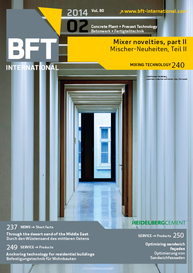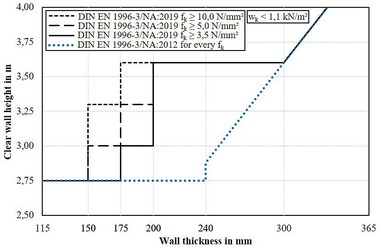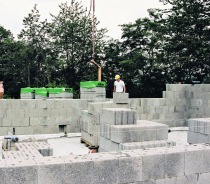The new EC6 European masonry code –
Compared to the DIN 1053-1:1996 and DIN 1053-100:2007 masonry standards, DIN EN 1996-3:2010 [1] contains significant improvements and simplifications in conjunction with the National Annex [2] published in 2012:
The characteristic compressive strength values for masonry fk are broken down to individual block types and grades.
There is no difference between the fk values for masonry consisting of lightweight concrete blocks with LM21 and LM36 lightweight mortars.
The verification explicitly considers the partially overlapping floor slab.
Besides the simplified calculation method, Annex A to DIN EN...






